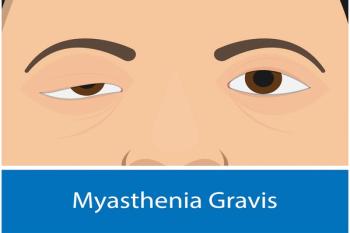
Registry for Children With Severe Asthma Shows Potential in Aiding Drug Trial Design
Investigators concluded that use of a new registry could aid in the recruitment of pediatric subjects with severe asthma and the design of future clinical trials for emerging biologics.
A first analysis of a new European registry containing data on pediatric patients with
Although Europe has 3 licensed biologics (omalizumab, mepolizumab, and dupilumab) to treat pediatric patients with asthma, the investigators of this present study said it was unclear if there were enough children in Europe with severe asthma and poor control that could be recruited for future drug trials. They also cited a lack of information of whether the current biologics could sufficiently address the needs of children with severe asthma and poor disease control.
The researchers included information entered into the registry from January 2019 to January 2020. Collected from 10 pediatric respiratory centers in 6 European countries, data on 80 children with diagnosed severe asthma and who were receiving a high-dose inhaled corticosteroid (ICS) and long-acting beta-agonist (LABA) was used in the analysis.
Children aged 6 to 17 years were included in the study. All had clinical and spirometry evidence of asthma, required high doses of an ICS and a LABA for 6 months or longer, and/or had used systemic corticosteroids for at least 25% of the previous year.
Of the 80 children included, 62 (77%) were identified has having suboptimal control of their asthma. Suboptimal control was defined as having an asthma control test score of 19 or lower, meeting Global Initiative for Asthma assessment criteria for “partly controlled” or “uncontrolled” asthma, having 2 or more severe exacerbations during the previous 12 months, or any combination of the 3.
Fifteen children were on an ICS and LABA alone. Thirty-eight were not prescribed a biologic, 29 of which had suboptimal control. Five of these 29 had no option to start a biologic, suggesting that eligibility criteria need to be less restrictive to better address the needs of children with severe asthma.
Furthermore, of the children not receiving a biologic who had suboptimal control, 17 were eligible for omalizumab; 11 for mepolizumab; and 10 for dupilumab.
Of the remaining 42 children who were prescribed a biologic, 33 had suboptimal asthma control. The majority of children with suboptimal control who were receiving a biologic had an option to switch to a different biologic.
Twenty-four children were prescribed for omalizumab; 18 could switch to mepolizumab based on current or previous blood eosinophil count and 17 were eligible to switch to dupilumab Additionally, 7 children prescribed mepolizumab had suboptimal control, 5 of which were eligible to receive dupilumab and 1, omalizumab.
Two children were receiving dupilumab who had suboptimal control, and both were eligible to switch to mepolizumab.
The investigators said that children receiving any of the 3 biologics may still have poor control because their current biologic may not be 100% effective at quelling the airway inflammation associated with their asthma.
Future clinical trials need to be pragmatic, they noted, when including children that are already prescribed a biologic, because switching a child with severe asthma and poor control to a placebo could be problematic.
Going forward, the researchers said that the registry can make it easier for other investigators to recruit because parents/guardians and children have already given their consent to be approached for future asthma studies and longitudinal data entry when they agreed to have their information entered into the registry.
“The SPACE registry in its current format will therefore be able to support recruitment into pan-European clinical trials of new asthma therapies in children, and to provide post-marketing data on biologics,” they said. In addition, over the next several years, “[they] intend to expand the number of participating centres, and record data on the total number of children managed with severe asthma, and the number of parents and children approached for consent for the registry.”
Reference
Liu NM, Carlsen KCL, Cunningham S, et al. First analysis of the Severe Paediatric Asthma Collaborative in Europe registry. ERJ Open Res. 2020;6(4):1-8. doi:10.1183/23120541.00566-2020
Newsletter
Stay ahead of policy, cost, and value—subscribe to AJMC for expert insights at the intersection of clinical care and health economics.













































